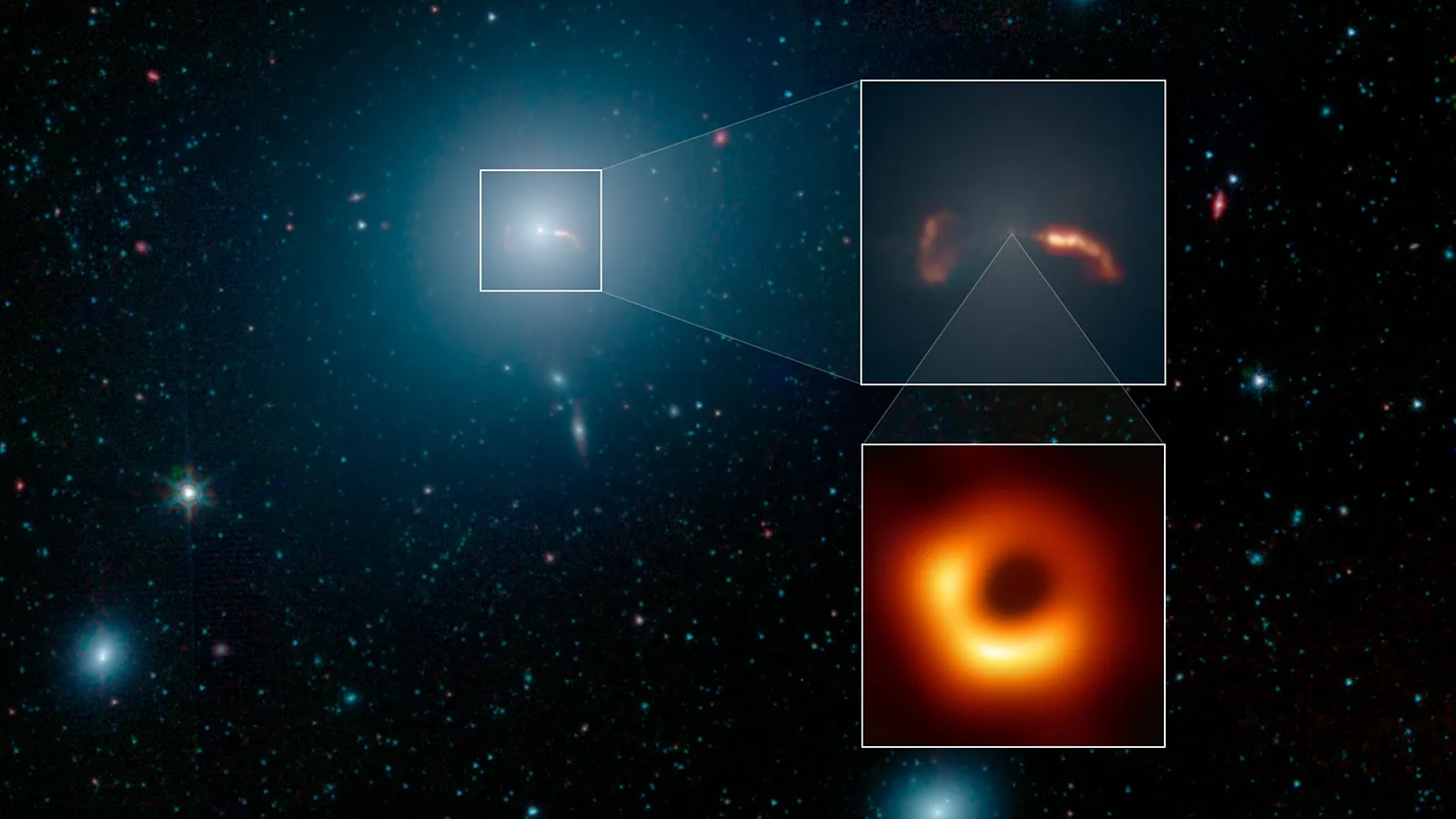
The mystery of how black holes can lose energy to their surroundings has plagued scientists for nearly 50 years. But a group of researchers may have just found the answer to this cosmic puzzle lurking in the gigantic, lightsaber-like jets that shoot out from one of the most monstrous and well-studied black holes in the universe.
It's generally thought that nothing, not even light, can escape a black hole's intense gravitational pull — but this is not entirely true. Since the late 1970s, scientists have theorized that, as a black hole spins at extremely fast speeds, it could lose rotational energy in the form of enormous energy jets that shoot out perpendicularly to a black hole's event horizon, or the boundary beyond which nothing can escape the black hole’s pull. (Information may also escape from black holes via complex gravitational "twisting," but this is a completely different puzzle.)
However, despite detecting these energy jets multiple times and even photographing them, scientists have remained unsure exactly how energy is transferred between the spinning black holes and their supercharged outflows.
To solve this problem, researchers from Princeton University have turned their attention to M87* — a supermassive black hole with an equivalent mass of 6.5 billion suns at the heart of the massive Messier 87 galaxy, which is located 53 million light-years from Earth.
Related: Do black holes really suck in matter?

M87* is one of the most well-studied black holes in the cosmos. In 2019, M87* became the first black hole to ever be directly photographed, and in April this year, scientists also captured an image of energy jets forming around the cosmic juggernaut for the first time. In September, researchers also accurately measured the rotation of M87* after noticing it wobble on its axis, which is the first time a black hole's spin has been confirmed.
In their new study, which was published Tuesday (Nov. 14) in The Astrophysical Journal, the Princeton team focused on M87*'s energy jets to see how they were being formed.
These energy jets "are basically like million-light-year-long Jedi lightsabers" that can extend to around 10 times as long as the Milky Way and release "truly insane" amounts of energy, study co-author Alexandru Lupsasca, a former Princeton researcher and current professor at Vanderbilt University who was also a co-winner of this year's New Horizon Prize in Physics, said in a statement.

But how is all of the energy pushed away from the black hole? The team found that the M87*'s rotation is being slowed down by drag from spiraling magnetic field lines that are generated by accretion disks — the swirling rings of superheated plasma that surround the event horizon — and intersect the black hole. As the black hole's spin slows down, the excess energy is released into the jets.
This had been previously predicted but, for the first time, the researchers mapped out exactly how these invisible lines twist together using new computer models based on data collected by the Event Horizon Telescope.
The findings also show that not every black hole may lose energy in this way. The team showed that the direction of the spiraling magnetic fields dictates which way energy is directed. If the fields surrounding another black hole spiraled in the opposite direction, then the energy would be sent back toward the event horizon and gobbled up by that black hole, the team found.
Related: Could a black hole devour the universe?
However, although the new model matches very well with observations of the jets, the team cannot rule out that something else, such as another, unknown source of rotating plasma, may be powering the jets instead. So for the time being, the mystery technically remains unsolved.
"I think it's extremely likely the black hole powers the jet, but we can't prove it," Lupsasca said. "Yet."
However, the team is hopeful that future observations from next-generation telescopes could help prove their finding beyond a shadow of a doubt.







